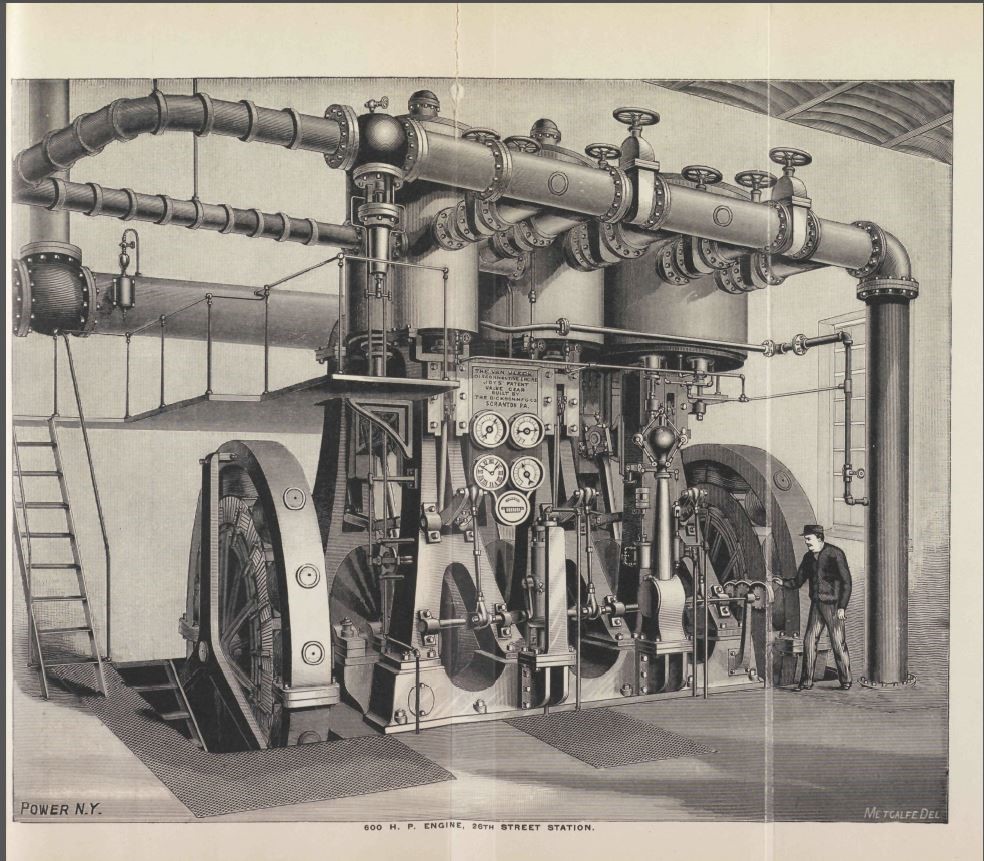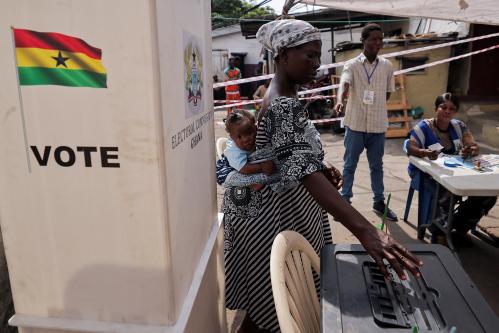Every evening, the sun drops behind the horizon and darkness falls. And, every evening, although 6 billion people reach out and switch on the lights, over 1.2 billion remain off-grid [1]. For over 100 years, since Thomas Edison’s coal-fired power station first lit up homes and offices in downtown Manhattan, the power for that light has—for the vast majority—been delivered by the electricity grid. But the grid as it is today cannot meet the challenge of delivering power to the 1 billion people who remain without it. Delivering power to the final billion will require the grid of the future—combining governments, the private sector, and the technological innovations that are revolutionizing the energy industry as we know it.
The challenge
The challenge is best illustrated by the 650 million Africans who don’t have access to electricity, and living mainly in remote, rural areas. At the moment, the economics of electrifying those communities are non-viable for three main reasons. The first two are:
1. Cost: Cost per connection and ongoing operating expenses are incredibly high due to the remoteness and low population density.
2. Poverty: Most people in these rural communities cannot support the revenues required to cover those costs.
These two factors mean that rural customers cannot pay what it would cost to connect them. This gap is not unique to Africa. It’s generic to the history of rural electrification in every single country, going right back to the United States, the first country to distribute power through electricity grids. The challenges listed in this 1926 Congressional research report [2] could almost have been lifted from a World Bank report on current efforts in Africa:
Widespread rural electrification has been held back to date by the financial obstacles to profitable distribution of power in the farming areas…Chief among the financial obstacles are the farmer’s small cash income, coupled with the large unit investment required in distribution systems to serve only a few farms per mile of line.
President Franklin Roosevelt addressed this gap in 1935 by establishing the Rural Electrification Administration (REA). In its first 5 years, the REA provided over $227 million in government subsidized loans ($3.6 billion in today’s dollars) to connect rural famers through laying distribution lines, wiring homes, and even building local diesel generation plants.[3]
This principle of subsidizing main grid connections is common to every country that has achieved universal electrification. So why hasn’t it worked for sub-Saharan Africa?
Because rural Africans face one additional, crucial, barrier, that rural Americans in the 1930s did not:
3. They live in countries whose governments are not wealthy.
McKinsey forecasts that in 2040, 500 million Africans will still lack access to the main grid.[4] Historically, it has taken countries an average of 25 years to move from an electrification rate of 20 percent to 80 percent.[5] South Africa is a good example: It made that 20-80 transition over 27 years. Key to this was a huge push in the late 1990s when the government subsidized 100 percent of the capital cost of every single connection.[6] However, for countries at the beginning of that transition, like Tanzania, for example, even 27 years looks optimistic. Tanzania’s GDP per capita is seven times smaller than South Africa’s was at the same moment in their electrification efforts.[7] If rural Tanzanians wait for the government to fully fund universal access, they will be waiting for a long time.
The solution: Technological innovation and the private sector
All three barriers can be addressed by building the grid of the future, today. This move integrates existing government involvement with two new developments.
The first development is the rise of four technological trends that are reshaping the energy industry as we know it:
1. Solar and batteries—becoming ever cheaper and better.
2. Internet of Things (IoTs)—the rise of remote monitoring and servicing.
3. Mobile money—frictionless payment systems for the unbanked.
4. Energy efficient appliances—LEDs, TVs, fridges delivering the same service for less energy.
These four mega-trends are radically transforming the economics of delivering energy to remote rural customers.
To bring the magnitude of this transformation alive, it’s worth going back to late 19th century New York. By the end of 1890, if you were a resident of Manhattan below 59th street, you could join the Edison Electric Illuminating Company’s 1,698 other customers and enjoy electricity for the price of “one cent, per 16 c. p. lamp hour,”[8] equivalent to 20 cents per kilowatt-hour ($0.20 /kWh). How does that compare with today? Adjusted for inflation, this is equivalent to around $5/kWh, which is about the same as the levelized price of energy that a solar home system can deliver to a rural customer in Africa.
Do not underestimate how extraordinary this is. It is now possible to deliver energy to a remote rural community in Africa, with a standalone system that fits in a cardboard box, at the same price per kWh as Edison’s coal-fired power station could in one of largest and most densely populated cities in the world.
The second development is the emergence of private sector rural energy companies. Solar home systems (SHS) companies such M-KOPA Solar and Mobisol have had huge success in providing energy services by selling 8W to 200W kits with lights, phone charging, and TVs. More recently, private sector companies such as PowerGen Renewable Energy have taken advantage of the four technological mega-trends to build and operate small versions of the main electricity grid—mini-grids—that can serve rural customers both more economically and many years before the main grid arrives.
It typically costs Tanzania’s national utility TANESCO $2,300 to extend the main grid to a rural off-grid household[9] due to the high cost of running high voltage lines out to remote areas (over $30,000/km for >66kV lines[10]). The new promise of mini-grids is that the same household could instead be connected to a mini-grid for $500 – $1,000 (through cheaper solar and batteries and cutting out high voltage lines), provided with a high-level of ongoing energy services at a lower cost (through the IoTs, mobile money, and energy efficient appliances), and supported up the energy ladder to use energy for refrigeration, milling, and irrigation by the private companies’ relentless focus on the customer.
Private capital is the final piece of the solution to the three barriers to rural electrification. Bringing private capital to bear will reduce the burden on the national governments. Long-term government support is still vital, but is far reduced. For a government accustomed to subsidizing 100 percent of a $1,000 – 2,000 per connection, subsidizing 50 percent of $500 – $1,000 mini-grid connection is a far better allocation of scarce resources.
Grid of the future
But—why should governments support mini-grids? Aren’t they just a stopgap, an investment that becomes a sunk cost when the main grid arrives?
Sam Slaughter, CEO and Founder of PowerGen disagrees “No—mini-grids are the main grid, just built more cheaply, with smarter technology, and years ahead of schedule. When the main grid does reach these communities, there’s a functioning distribution network and customer base for it to plug into.” The localized generation and storage then continues to provide additional power, and reliability. Slaughter argues that mini-grids enable countries to effectively “build the grid of the future from the outside in,” allowing poorer and more remote people to be connected faster and cheaper than has previously been possible.
What needs to be done?
What needs to be done to make this happen? Fortunately, there’s nothing new about mini-grids, subsidized rural electrification, or private sector involvement, so we can look to recent examples to draw lessons.
Three things need to happen:
1. Mini-grid economics must become too compelling to ignore.
Mini-grids need to become the answer to politicians’ promises of universal energy access. They need to deliver the most connections, at the same level of energy service, for the least amount of government funding. African governments are already familiar with mini-grids: Kenya’s national utility KPLC runs 19 largely diesel based mini-grids. However, their economics are not compelling. The government of Kenya funded 100 percent of the grids’ capital costs, and the cost of fuel used in power generation is fully transferred to all KPLC customers. Instead, private sector mini-grids must become an “offer that’s too good to refuse.” —cheaper and better.
2. Private and public capital must be brought into the sector to show it works at scale.
Governments need evidence of how mini-grids can combine innovation in the hands of the private sector, with blended private and public funding, to deliver electrification at scale. Again, this is not new to Africa. Mali’s spontaneous bottom-up mini-grid concessions have succeeded in providing electricity to 78,000 rural households since the program began in 2003. More than 250 such mini-grids are operating in the country, run by 68 private entities. AMADER (Mali’s rural electrification agency) established a rural electrification fund, which provided mini-grid operators an average of 75 percent of the capital investment costs, the remainder coming from local private financiers.
For other countries considering subsidizing mini-grids, the burden is also less than expected. For example, a recent report calculated the additional levy required to support mini-grid expansion in Kenya is $0.0006/kWh, less than a 1 percent increase on the average tariff[11].
3. Government policy and regulation must support innovation.
Finally, government policy and regulation needs to support the development of the grid of the future, which will be an integrated mesh of large-scale generation, consumers, and local distributed generation and storage, allowing consumers to both receive and send power. Nigeria has recently taken the lead in building mini-grids into its future energy planning by passing some of the clearest regulation on the continent, setting out how mini-grid integrate into the main grid when it arrives.
Conclusion
These three changes will help deliver the grid of the future, today. And that grid of the future is what’s needed to deliver on the ambition of universal energy access, championed by governments across Africa today and first articulated by the Edison Electric Illuminating Company 124 years ago:
With the natural increase of business, the relative cost of generating current should steadily decrease, and the time should come, and at no distant day, when it will be practicable to reduce the price of current for illumination as well as for other purposes, and make electricity not merely a luxury in private residences, and a convenience and economy in manufacturing establishments, but the general servant of the community.”[12]
Note: This piece reflects the views of the author only and not those of the Africa Growth Initiative.
end notes
[1] Cupler, A. (1926). Rural electrification in the United States. Editorial research reports 1926 (Vol. III)
[2] Kitchens and Fishback, Flip the Switch: The Spatial Impact of the Rural Electrification Administration 1935-1940, 2013
[3] McKinsey’s Brighter Africa Report, February 2015
[4] ibid
[5] Marquard et al: South Africa’s Electrification Programme: an Overview and Assessment, 2007
[6] World Energy Outlook, 2016
[7] World Bank – http://data.worldbank.org (GDP data adjusted for inflation but not PPP)
[8] Edison Electric Illuminating Company of New York Annual Report, 1890
[9] McKinsey’s Brighter Africa Report, February 2015
[10] Unit Costs of Infrastructure Projects in Sub-Saharan Africa 2008, World Bank
[11] ECA report
[12] Edison Electric Illuminating Company of New York Annual Report, 1893
The Brookings Institution is committed to quality, independence, and impact.
We are supported by a diverse array of funders. In line with our values and policies, each Brookings publication represents the sole views of its author(s).







Commentary
Building the grid of the future, today
October 10, 2017